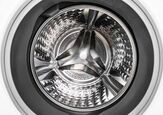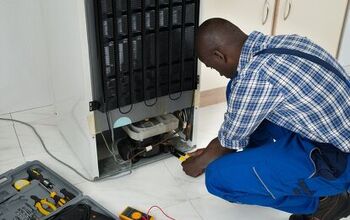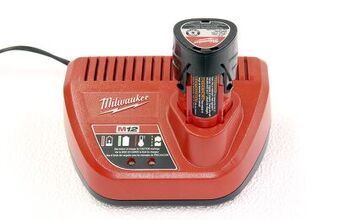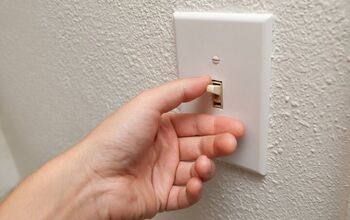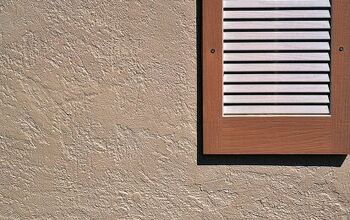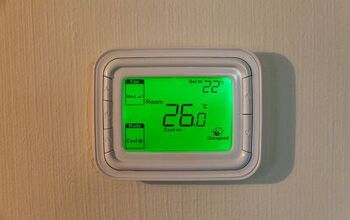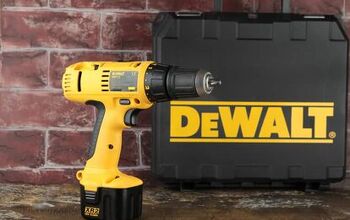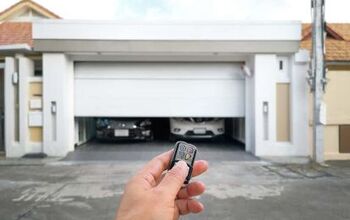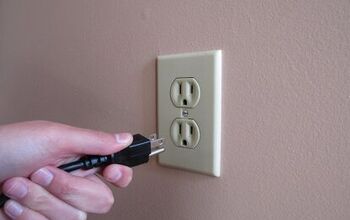How Long Can My Hot Tub Sit Empty?

Many homeowners routinely drain their hot tubs for maintenance purposes or simply because they won’t use them for a while. Understandably, some people worry that leaving their hot tubs empty for too long will lead to problems. So, how long can my hot tub sit empty?
Your hot tub can sit empty for as long as you need if you remove all the water from the plumbing and filter. Otherwise, you shouldn’t leave it empty for more than 2-4 weeks if the pipes contain stagnant water. This can cause harmful bacteria to form, and the problem may get worse when you refill your hot tub with water.
An empty hot tub can even freeze if the pipes still contain water. Follow along as we explore how long your hot tub can sit empty and highlight ways to make it safe.
How Long Can I Leave My Hot Tub Empty?
If you take the right precautions, you can leave a hot tub empty indefinitely. However, you must empty the tub, including the plumbing, or you may suffer consequences. For example, harmful bacteria may appear and thrive if water still sits in the plumbing and pump.
This can make it difficult to treat the water when you refill and reopen your hot tub. Many people empty their hot tubs for a few weeks or months during the peak of summer. However, some experience problems because they fail to cover their hot tubs.
This can cause the shell and plumbing to crack and bacteria to form in the remaining water. Removing all the water is hard, but you must do your due diligence and remove as much as possible. Otherwise, you can’t leave your hot tub empty for long before you experience problems.
How Often Should You Empty A Hot Tub?
Ideally, you should empty your hot tub once every 3-4 months. That way, you can clean your hot tub, refill it with fresh water, and treat it with chemicals. Some homeowners find this tedious and hire local technicians to do this for them.
However, it isn’t as difficult as it sounds if you use a submersible pump to drain the water. You can empty a hot tub in as little as 20 minutes with a submersible pump. Keep in mind that how long it takes varies based on the capacity of the tub and the method you use.
For example, draining a hot tub takes at least an hour if you don’t use a pump and use the drainage spigot instead.
Can I Drain My Hot Tub Water Into My Yard?
It’s not a great idea to drain hot tub water into your yard. That’s because chemicals like chlorine can damage your lawn and harm animals and bugs. Not only does chlorine harm grass, but it can also negatively impact the soil in your lawn.
Granted, your lawn won’t suffer significant damage if a small amount of chlorinated hot tub water lands on it. That being said, draining a 450-gallon hot tub onto your lawn is a bad idea. It’s best to drain the water into a sanitary sewer whenever possible.
However, you should never empty a hot tub into a storm drain, as that is unsanitary and unhealthy. The chemicals in the water can wind up in a waterway, which is dangerous and bad for the environment.
How Long Can A Hot Tub Sit Unused?
You can let a hot tub sit for 2-4 weeks without using it if it still contains water. However, you must continually treat the water during this period to ensure the water doesn’t become contaminated with bacteria. It’s also important to check the water at least a few times per week to make sure the color and odor are normal.
Hot tub water can become stagnant in as little as 1-2 weeks if you don’t treat it and the water doesn’t circulate. It’s a great idea to occasionally run the jets if you don’t plan to use your hot tub for a few weeks. This helps prevent the water from becoming stagnant and becoming overrun with bad bacteria.
Empty your hot tub if you don’t think you’ll lose it for 2-4 weeks or longer. Otherwise, the gaskets and plumbing may suffer damage that is hard and expensive to repair. This can also cause messy leaks that are hard to patch without professional help.
Will An Empty Hot Tub Freeze?
An empty hot tub cannot freeze if no water remains in the plumbing. However, your hot tub can still freeze even if you empty the water in the tub itself. The plumbing and filter are the parts that you should be more worried about freezing.
Much like in your house, the pipes in your hot tub can freeze and expand if water is left in them. The expansion and pressure can make the pipes in your hot tub burst. It costs between $250 and $1,500 to fix burst hot tub pipes, so it isn’t worth the risk.
Your best bet is to use a submersible pump or a long garden hose to remove all the water from the pipes in your hot tub. That way, you won’t have to worry about your hot tub while it’s closed for the season.
How Long Do Hot Tubs Last?
Hot tubs last up to 20 years if you take great care of them throughout the year. However, hot tubs can go bad in as little as 5 years if you don’t treat them well or winterize them correctly. Everything from where it's located to your maintenance routine can affect how long your hot tub lasts.
For example, in-ground hot tubs can last longer than above-ground hot tubs if you take care of them. Look for a well-insulated unit if you want your hot tub to stand the test of time. A sturdy frame is also important, as hot tubs can hold 300 to 650 gallons of water.
Ideally, you should enlist professional help to service your hot tub each year to keep it in great condition. A technician can drain your hot tub, clean the filter, check the equipment, and inspect it for damage. Hot tubs are just like appliances in that they require routine check-ups.
Summing It Up
You can leave your hot tub empty for weeks or longer if no water remains in the plumbing. Otherwise, you can’t leave your hot tub empty for more than a few weeks if water remains in the pipes. This can cause harmful bacteria and even algae to thrive, and it will be harder to treat when you refill it with water.
Related Guides:

Nick Durante is a professional writer with a primary focus on home improvement. When he is not writing about home improvement or taking on projects around the house, he likes to read and create art. He is always looking towards the newest trends in home improvement.
More by Nick Durante

